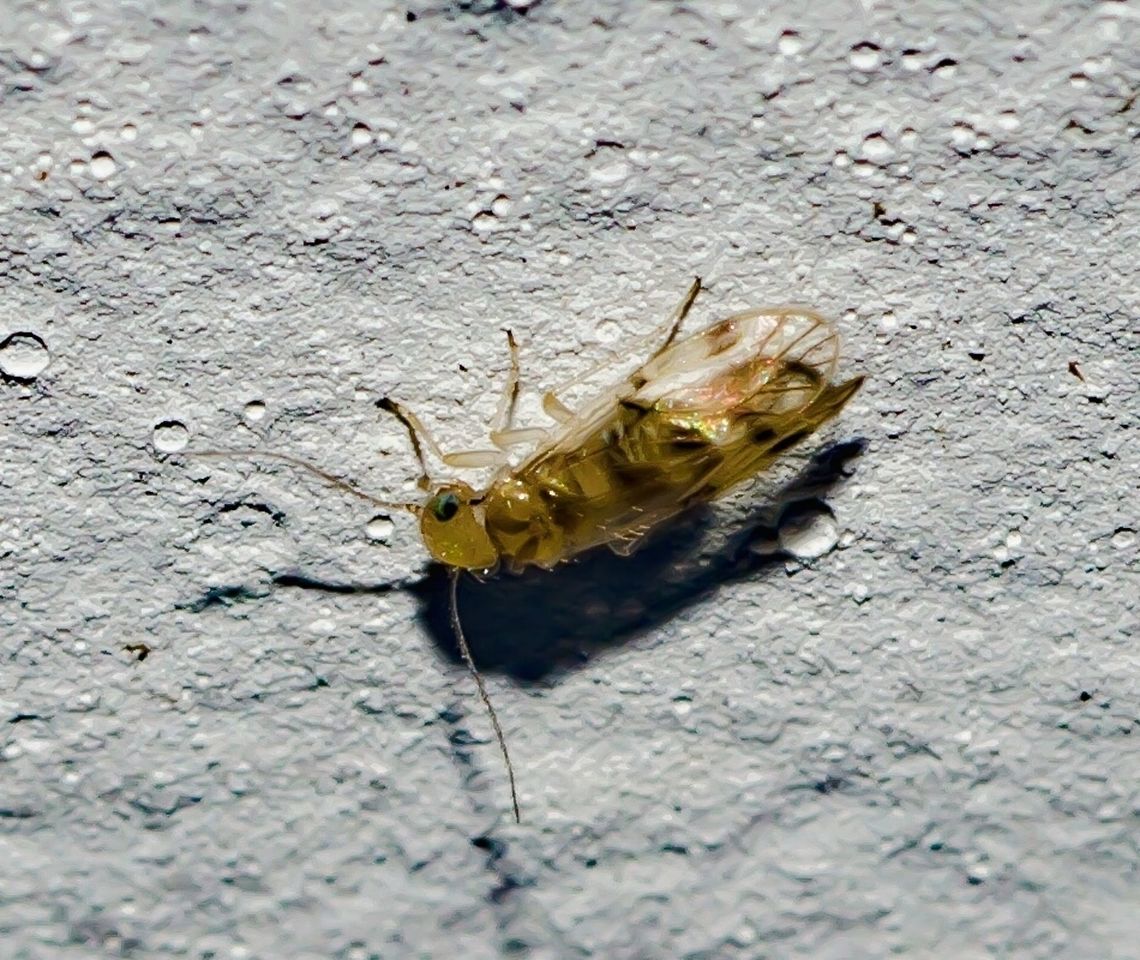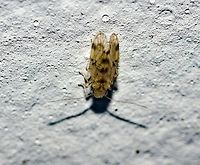
Pseudocaecilius sp. - False Lizard Barklice / Falso-Piolho-Dos-Livros (Enderlein, 1903)
Psocodea (Psocoptera): Psocomorpha: Homilopsocidea: Philotarsetae: Pseudocaeciliidae: Pseudocaeciliinae
Date: 10th of March, 2018 at 06:58:00pm.
Location: Brazil, Ceará, Fortaleza
Other picture: 
Length: ~1,5mm (questionable)
Width: ~0,5mm (questionable)
Pseudocaecilids inhabit leaves and can often be found in clusters of dead leaves on tree branches. Some species live under sparse webbing, alone or in small groups. The subject portrayed was found on the 16th floor of a flat in an urban habitat.
Pseudocaecilius is a member of the order Psocodea, also known as Psocoptera, suborder Psocomorpha, infraorder Homilopsocidea (divided into three groups according to the source below, in which this is allocated in Philotarsetae), family Pseudocaeciliidae and subfamily Pseudocaeciliinae.
Psocodea Species File (http://psocodea.speciesfile.org/Common/basic/Taxa.aspx?TaxonNameID=1195922) cites Hageniella as a synonym to Pseudocaecilius.
In general, the antennae have 13 segments and the tarsi 2 or 3 segments. The abdomen usually possesses 2 to 3 vesicles on the underside. The wings are usually membranous with the forewing occasionally coriaceous but with distinct venations. Forewing veins with Caecilius pattern (areola postica relatively narrow and long, free of vein M and veins Rs and M are joined by a crossvein or fused for part of their length). Forewings also appear hairy or fuzzy; hairs on the margin of the forewing form crossing pairs and forewing veins have more than one row of hairs. The hindwing's veins Rs, M and Cu are fused at the base; hairs on the margin are abundant and form crossing pairs on the hind margin. Hairs on the veins in a single row. The males' phallosome has complex sclerotization on the tip and the hypandrium is ornamented with rugose areas and transverse marginal comb. The females' subgenital plate is bilobed and gonapophyses are complete and well developed; dorsal valve is pointed and have a large preapical lobe, sometimes closely associated with the subgenital plate; ventral valve is pointed and have a large preapical lobe; external valve is very large and hairy. The body is robust and usually features brown or yellow colors or both.
I do not know any other information on Pseudocaecilius besides what is visible through the morphology. Further informations on feeding habits, behaviour and anatomy will be appreciated and credited. The subject portrayed questionably measured around 1,5mm in length, and around 0,5mm in width.
Wings venations: http://www.naturewatch.org.nz/taxa/245122-Pseudocaeciliidae
Other sources:
http://tolweb.org/Pseudocaeciliidae/14475
http://eol.org/pages/52884/overview
https://sv.wikipedia.org/wiki/Pseudocaecilius
No species identified
The species on this photo is not identified yet. When signed in, you can identify species on photos that you uploaded. If you have earned the social image editing capability, you can also identify species on photos uploaded by others.

comments (1)